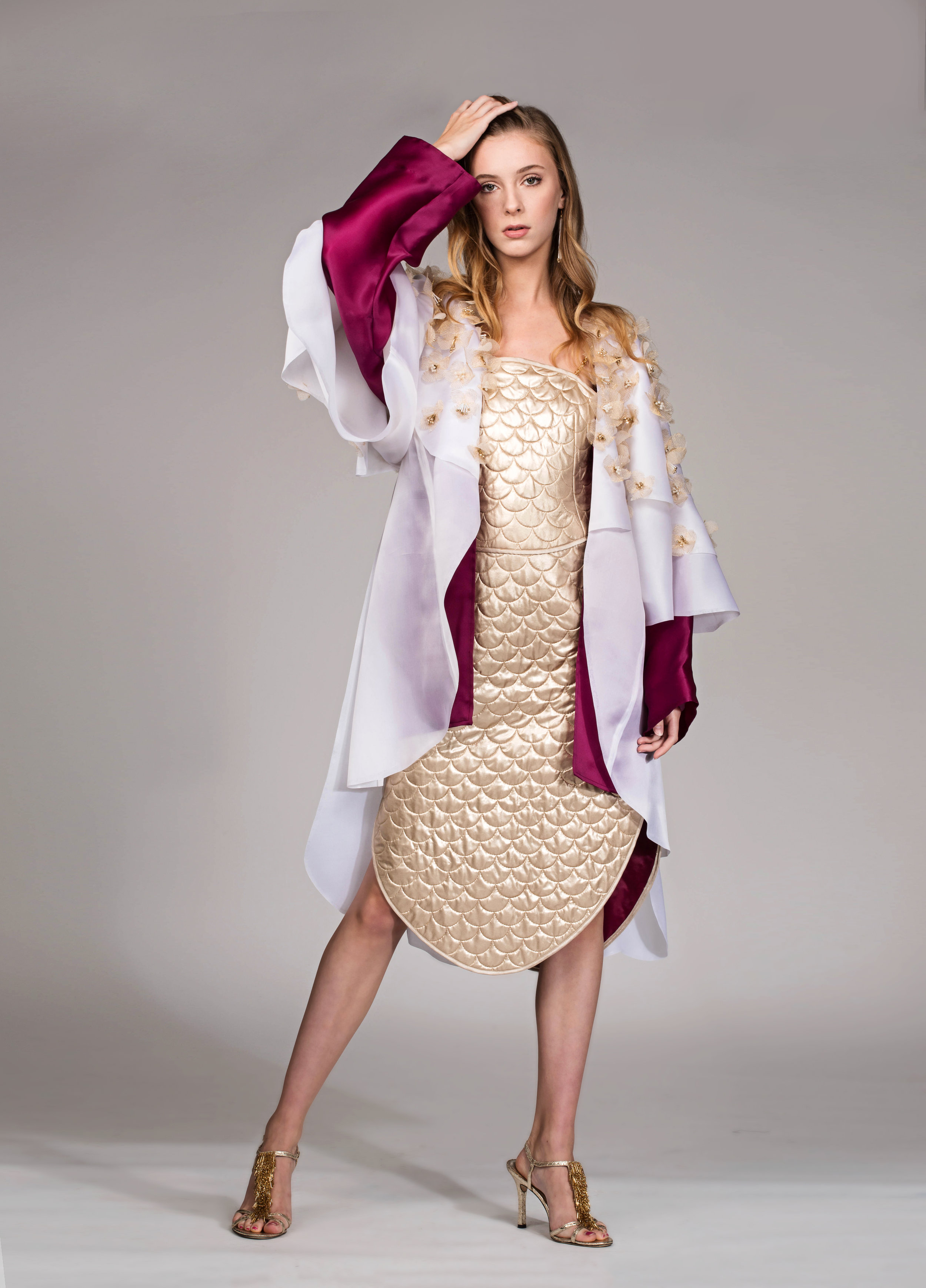An exploration of feminism and faith in Jesus Christ
Saintly Flora was born out of my need to reconcile my faith and my feminism – as well as my desire to incorporate both in my work as a designer. Growing up in the Christian church, I often felt there was a disproportionate amount of time spent teaching about men versus women. As I got older and began identifying with feminist values, this started to bother me. I have also met many people over the years who claim that the Bible is misogynistic in nature. This is at odds, though, with what a handful of people I know and trust say. These people are intimately familiar with Scripture and speak often about the importance and value it ascribes to women.
For years I was unable to form my own opinion on this topic because I frankly had not spent much time studying the Scriptures. So, while I was formulating my senior fashion design thesis at Pratt Institute, I dusted off my Bible, identified a handful of women within its covers, and began studying their stories.
It quickly became clear that there is, indeed, a good dose of the mistreatment and oppression of women described in the Scriptures. It also became clear, though, that the Bible does not condone such behavior but simply describes conditions, behaviors and events that happened when its various parts were written. All of its books were penned in cultures, geographical areas, and times that differ dramatically from modern-day America. Women typically had limited-to-no rights in these settings and were often viewed as the property of their husbands, families, or guardians. While this does not excuse the violation of basic human rights, it does help us understand the environment in which the abuses described took place.
The more I read, the more intrigued I became with the idea of revealing the Bible’s true teachings about women in my designs for my senior fashion collection. I soon decided to focus each of the eight looks on a particular woman in the Scriptures. Since I firmly believe that being a homemaker is just as impressive as having a successful career outside of the home, I chose a diverse collection of women including a Queen, a judge, a businesswoman, a prophet, a peacemaker/diplomat, a woman with a servant’s heart, a common woman whom Jesus treated like a disciple, and a foreign woman who remained highly dedicated to her Jewish mother-in-law following her husband’s death. You can read more about my reasoning behind each selection in the drill down pages for each look (please click on the person’s name).
Next, I choose a form of symbolism that would drive the design for all of the woman, settling on a unique source of both beauty and strength in nature – flowers. More specifically, the language of the flowers. As I studied each woman, I wrote down their key attributes, life events, and actions and then searched for equivalents in flower language. Once a defining flower or herb was chosen for a woman, I used its form and colors to design that look. I strove to capture each woman’s strength, beauty and value in a way that honors her life and captures how she thrived in difficult settings. I eventually dubbed the collection Saintly Flora.
Halfway through the development of my collection, I learned about the Beauty by God international fashion competition and submitted my designs. I was eventually selected as one of the four winners from around the world and was privileged to show my collection at the French Embassy in Washington, D.C. during D.C. Fashion Week’s 2019 International Couture Collections show.
As I worked on this collection over a two-year period, I grew tremendously in my faith and in my understanding of what I now view as the inherent feminism of the Bible. The collection means so much more to me now than I could have anticipated when I first envisioned it. It has been highly beneficial to call into question various aspects of my faith, delve into the Bible for answers, and draw my own conclusions. I now understand why the Bible admonishes us to “…test everything that is said. Hold on to what is true (1 Thessalonians 5:21).”







